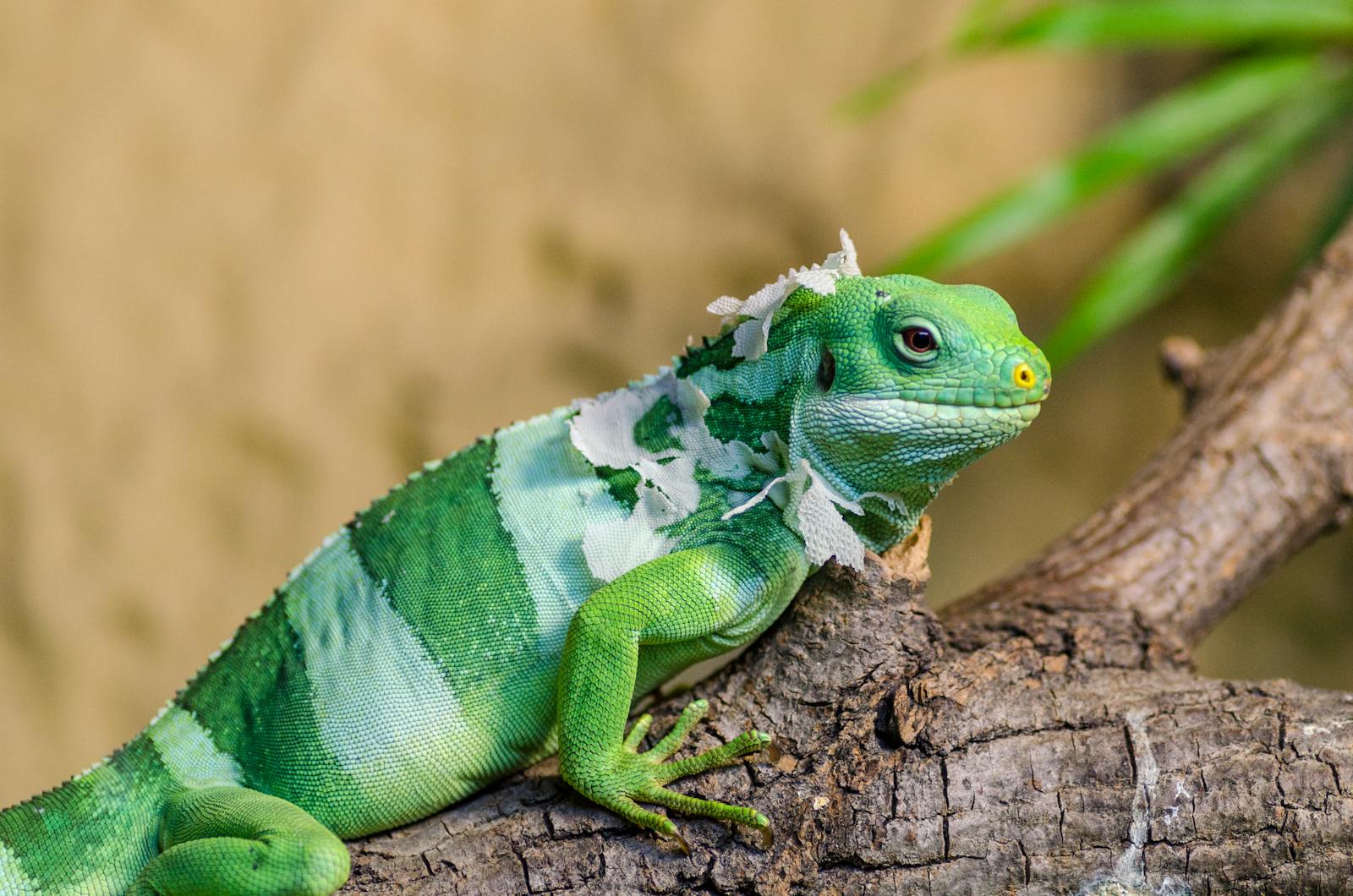Iguanas, with their prehistoric appearance and unique personalities, have become increasingly popular exotic pets.
These fascinating reptiles can grow to impressive sizes, live for 15-20 years, and form strong bonds with their caretakers when properly socialized. However, iguanas require specialized care that differs significantly from traditional pets like cats and dogs.
Before bringing an iguana into your home, understanding their complex needs is essential for ensuring they live a healthy, happy life.
This guide will walk you through everything you need to know about proper iguana care, from creating the perfect habitat to recognizing signs of illness and building trust with your scaly companion.
Understanding Iguana Species and Natural Behavior
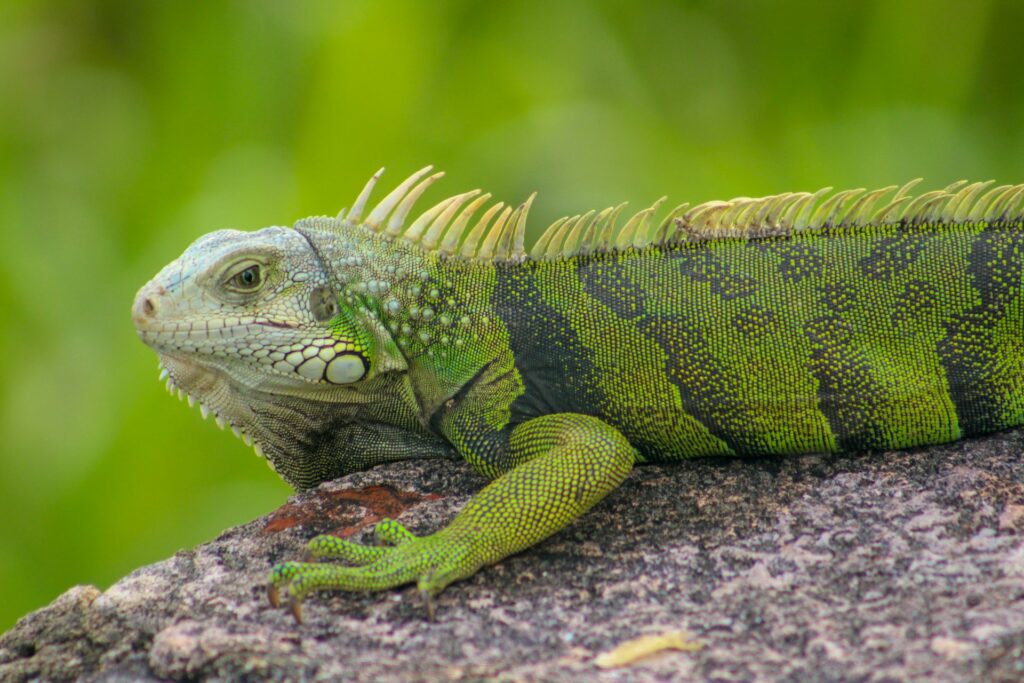
The most common pet iguana is the green iguana (Iguana iguana), native to Central and South American rainforests. These arboreal reptiles spend much of their time climbing trees in the wild, basking in the sun by day, and seeking shelter at night.
Adult male iguanas can grow up to 6 feet long (including tail) and weigh 15-20 pounds, while females typically remain somewhat smaller.
Their natural behaviors include territorial displays, head bobbing for communication, and a primarily herbivorous diet focused on leaves and fruits.
Understanding these natural behaviors and instincts is crucial for creating an appropriate captive environment that allows your iguana to express normal behaviors and thrive under your care.
Setting Up the Proper Enclosure
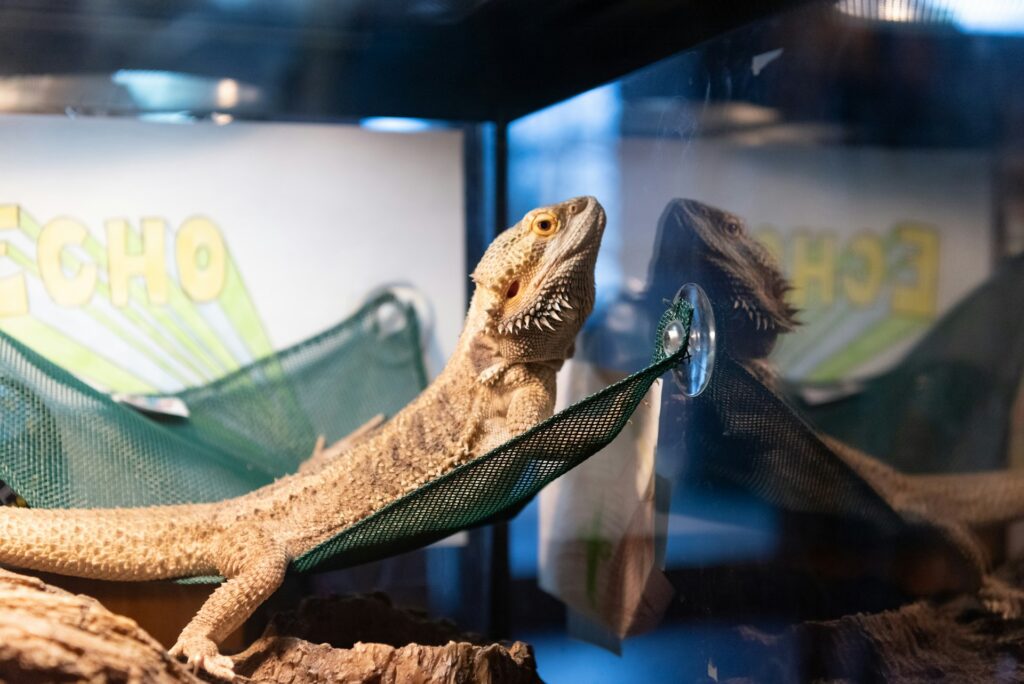
Iguanas require spacious enclosures that accommodate their large adult size, with the absolute minimum being 6 feet tall, 6 feet long, and 3 feet wide for a full-grown adult.
Custom-built enclosures often work better than commercial terrariums, as few pre-made options provide adequate space. The enclosure should feature multiple sturdy branches for climbing, platforms at various heights for basking, and visual barriers for security.
Wire mesh or well-ventilated sides promote proper airflow, while a solid back panel provides a sense of security. Remember that iguanas are escape artists, so all doors must have secure latches, and any openings should be carefully sealed.
As juveniles grow rapidly, it’s more economical to start with an adult-sized enclosure rather than purchasing progressively larger habitats.
Essential Lighting and Temperature Requirements
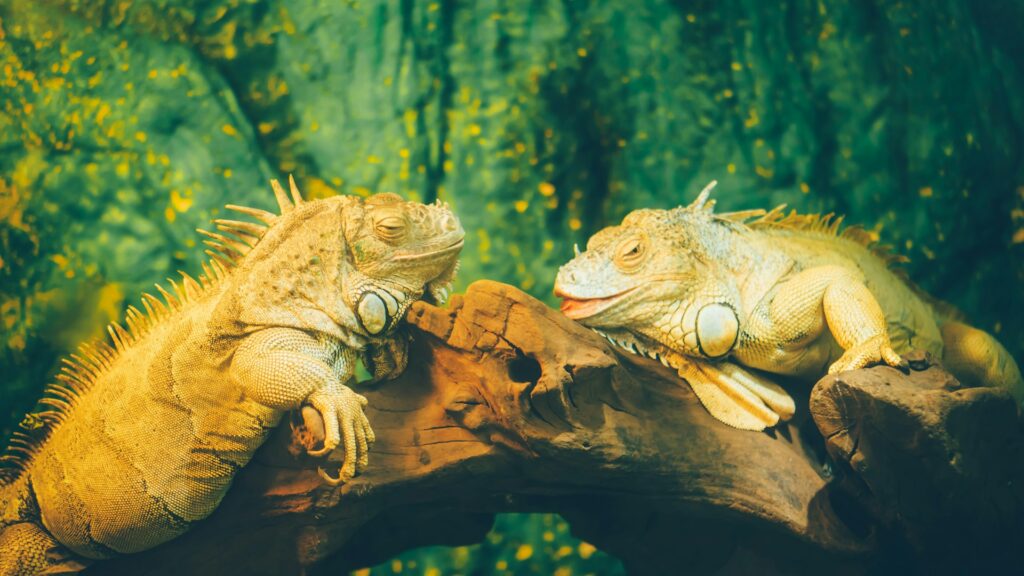
Proper lighting is non-negotiable for iguana health, as they require both UVB rays for vitamin D3 synthesis and heat lamps for temperature regulation.
UVB bulbs rated 10.0 or higher should be placed above basking areas and replaced every 6-12 months, as their effectiveness diminishes even when they still produce visible light.
The basking spot should reach 95-100°F (35-38°C), with a temperature gradient allowing your iguana to self-regulate by moving between warmer and cooler areas.
The overall ambient temperature should stay between 80-85°F (27-29°C) during the day and not drop below 75°F (24°C) at night. Digital thermometers placed at both the basking spot and the cooler end of the enclosure help ensure appropriate temperature maintenance.
Without proper UVB exposure, iguanas develop metabolic bone disease, a painful and often fatal condition.
Humidity and Substrate Considerations

Iguanas require high humidity levels of 70-80% to maintain healthy skin and proper hydration. This can be achieved through daily misting of the enclosure, providing a large water bowl for both drinking and soaking, and using humidity-retaining substrates.
Appropriate substrate options include cypress mulch, orchid bark, or specialized reptile soil mixtures that hold moisture without becoming moldy.
Avoid sand, walnut shells, or cedar substrates, which can cause impaction if ingested or respiratory issues due to aromatic oils. Humidity gauges (hygrometers) should be placed in multiple locations throughout the enclosure to monitor levels consistently.
During shedding periods, temporarily increasing humidity even further by providing a “humid hide” or extra misting can help your iguana shed its skin more comfortably.
Nutritional Needs and Proper Diet
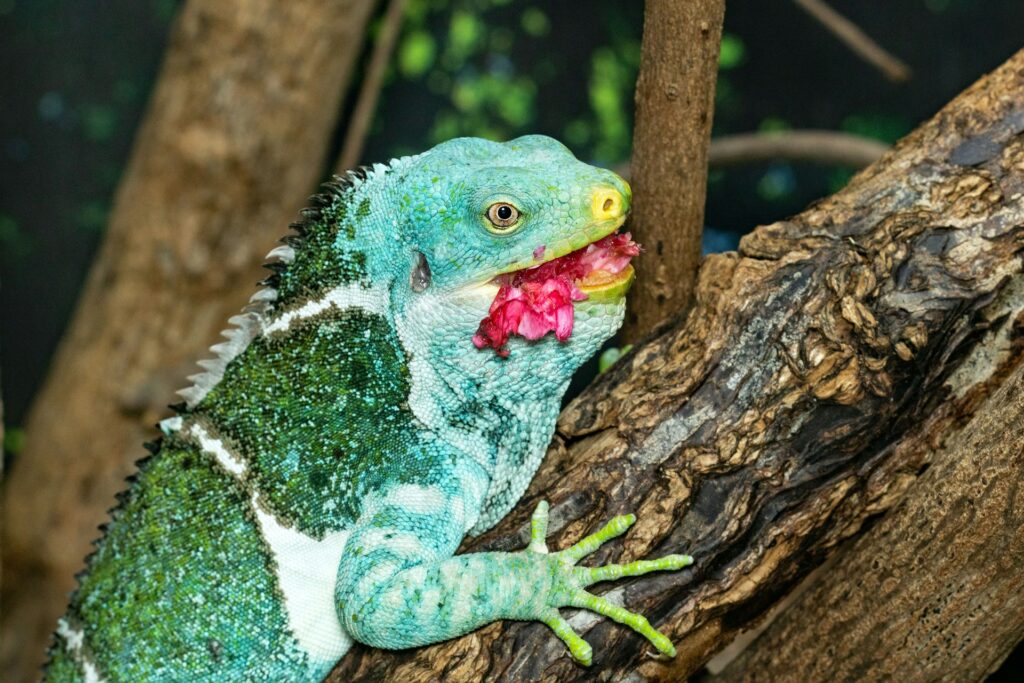
Iguanas are herbivores requiring a carefully balanced diet of dark leafy greens, vegetables, and limited fruits.
The foundation of their diet should be calcium-rich greens such as collard greens, mustard greens, dandelion greens, and turnip greens, comprising about 80% of their food intake.
The remaining 20% can include squash, bell peppers, green beans, and occasional fruits like berries or melon as treats.
Foods to avoid include spinach, avocado, rhubarb, and high-protein items like insects or commercial dog food, which can cause kidney damage. A calcium supplement should be dusted on food 3-4 times weekly, with a multivitamin supplement once weekly.
Young iguanas should be fed daily, while adults typically eat every other day. Always remove uneaten fresh food after 24 hours to prevent bacterial growth in the enclosure.
Water and Hydration Management

Despite living in humid environments, iguanas need dedicated water sources for proper hydration. Provide a water dish large enough for your iguana to soak in completely, as they often absorb water through their skin in addition to drinking.
The water should be changed daily, as iguanas may defecate in their water or contaminate it with food particles.
Many iguanas enjoy regular misting with a spray bottle, which simulates rainfall and encourages drinking as they lick water droplets from their bodies and surrounding surfaces.
Proper hydration is evidenced by clear, well-formed urine with white urates, while dark or discolored urine may indicate dehydration or health problems.
Some owners also provide weekly shallow baths in the bathtub (supervised and with appropriate water temperature) to promote hydration and natural soaking behaviors.
Handling Techniques and Socialization
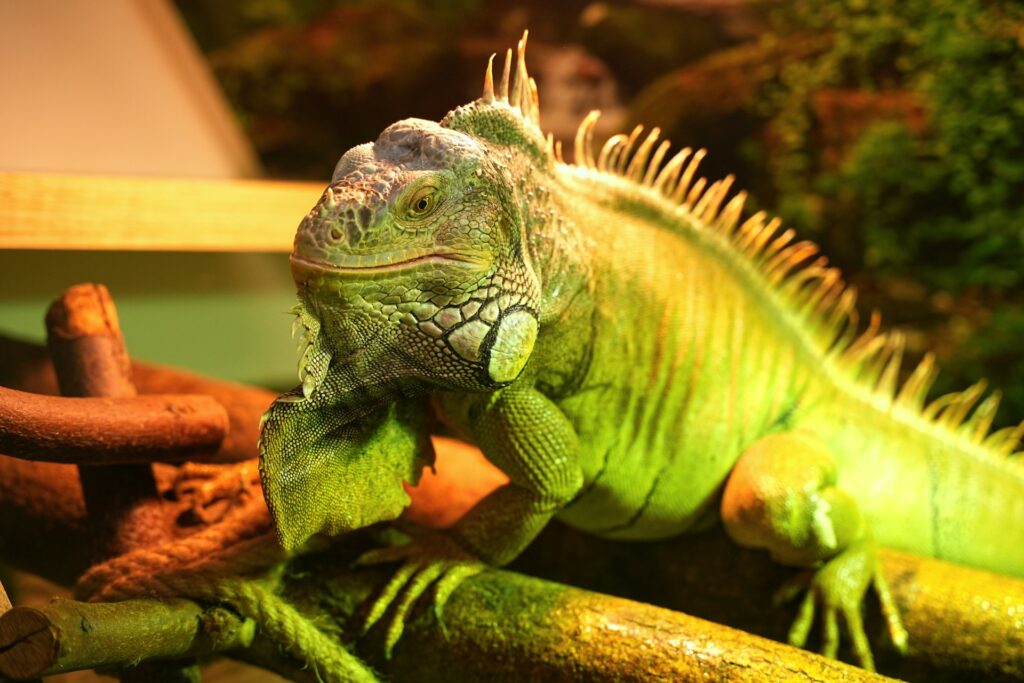
Proper handling is essential for building trust with your iguana and ensuring both your safety and theirs. When approaching your iguana, move slowly and speak softly to avoid triggering their flight response.
Support their body fully during handling, with one hand under the chest and the other supporting the base of the tail, never grabbing the tail tip, which can break off (caudal autotomy).
Begin with short handling sessions of 5-10 minutes and gradually increase the duration as your iguana becomes more comfortable.
Consistency is key—daily gentle interaction helps acclimate your iguana to human contact and builds positive associations.
Be aware that male iguanas may become territorial during breeding season, exhibiting head-bobbing, dewlap extension, and potentially aggressive behavior, requiring more cautious handling during these periods.
Common Health Issues and Prevention

Vigilant health monitoring helps catch potential problems before they become serious. Metabolic bone disease, resulting from calcium deficiency or inadequate UVB exposure, manifests as weak limbs, tremors, and jaw softening and requires immediate veterinary intervention.
Respiratory infections, indicated by wheezing, nasal discharge, or open-mouth breathing, typically stem from insufficient temperature or excessive humidity.
Mites and parasites can be prevented through proper hygiene and regular fecal examinations by a reptile veterinarian.
Mouth rot (infectious stomatitis) appears as cheese-like material in the mouth and requires antibiotic treatment. Regular weight monitoring, stool consistency checks, and observation of eating habits provide valuable health indicators.
Establishing a relationship with an exotic animal veterinarian before emergencies arise ensures your iguana receives proper care when needed.
Shedding Process and Support
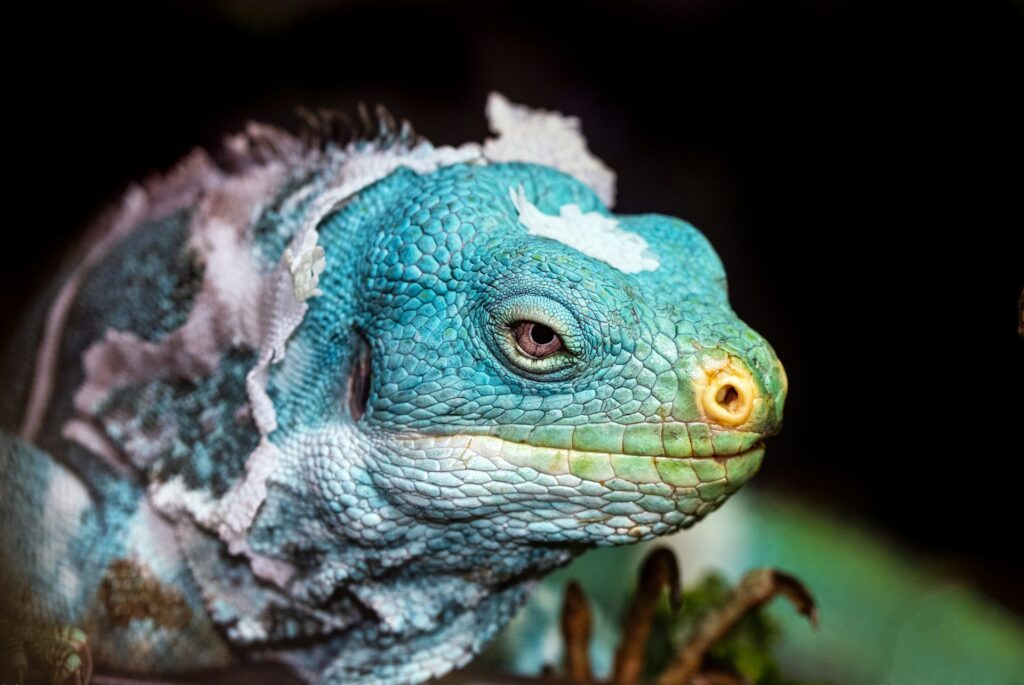
Iguanas shed their skin throughout their lives, with younger individuals shedding more frequently as they grow. Unlike snakes that shed in one piece, iguanas shed in patches over days or weeks, appearing dull or grayish before shedding begins.
During this time, they may become more irritable or reclusive due to the uncomfortable sensation. To support healthy shedding, temporarily increase enclosure humidity and provide rough surfaces like cork bark for rubbing against.
Never pull or peel stuck shed, as this can damage the underlying new skin; instead, offer a warm soak to soften stubborn patches. Post-shed skin should be removed from the enclosure to maintain hygiene.
If your iguana experiences frequent incomplete sheds with retained skin, this indicates humidity or nutritional problems that should be addressed promptly.
Enrichment and Mental Stimulation
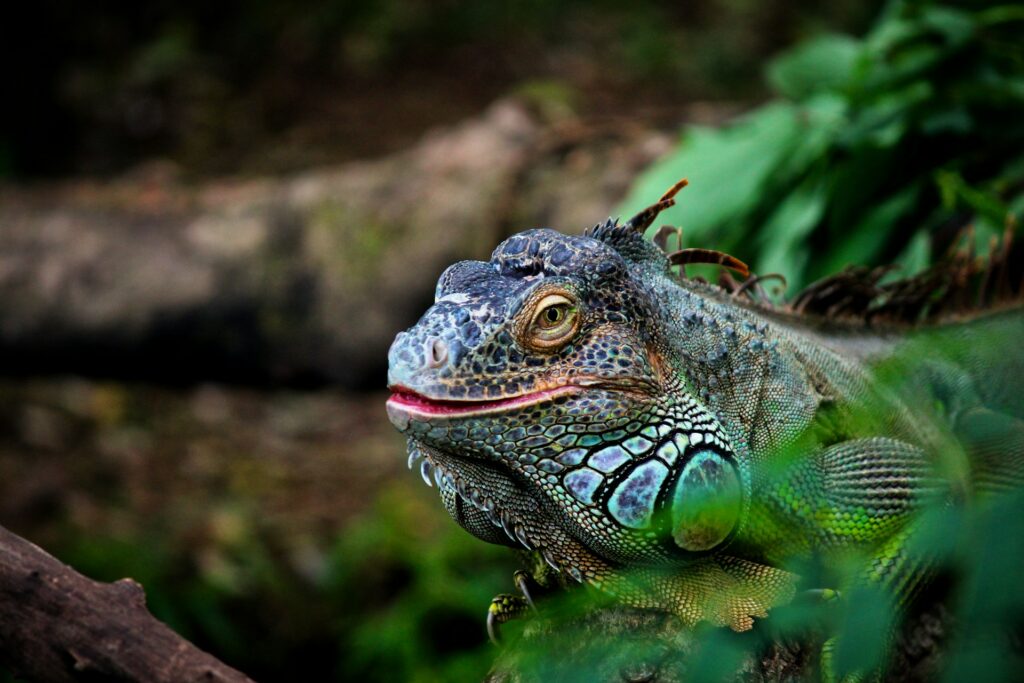
Though often underestimated, iguanas are intelligent reptiles that benefit greatly from environmental enrichment.
Provide climbing structures of varying heights and textures, including branches, ropes, hammocks, and platforms that allow for exploration and exercise. Some iguanas enjoy pushing or investigating novel objects like reptile-safe toys or balls.
Food enrichment, such as hiding leafy greens throughout the enclosure or hanging them to encourage natural foraging behaviors, stimulates both physical activity and mental engagement.
Rearranging elements of the enclosure periodically prevents boredom while maintaining some familiar items for security.
Time outside the enclosure in a secured, iguana-proofed room allows for extended exploration and exercise, though never leave your iguana unsupervised during these sessions.
Breeding Considerations

Breeding iguanas should only be attempted by experienced keepers with a thorough understanding of the process and appropriate facilities. Female iguanas become sexually mature around 2-3 years of age, while males mature slightly earlier.
During breeding season, males display intensified color, especially orange on the head and jowls, along with prominent territorial behaviors.
Female iguanas typically lay 20-70 eggs per clutch and require a specialized nesting box filled with a moisture-retaining substrate for egg laying.
Gravid (egg-bearing) females need extra calcium supplementation to prevent egg-binding and calcium depletion.
Given the overpopulation of captive iguanas and the specialized care requirements for egg incubation and hatchling rearing, casual breeding is strongly discouraged unless you have a dedicated placement plan for potentially dozens of offspring.
Long-term Commitment and Lifespan
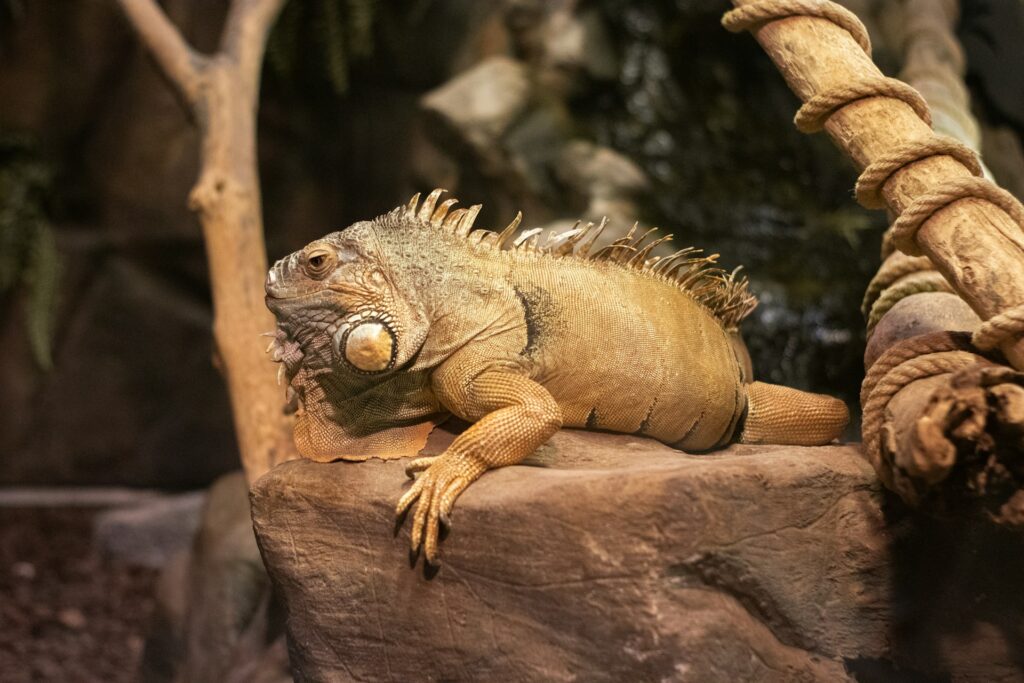
Adopting an iguana represents a substantial long-term commitment, as these reptiles commonly live 15-20 years with proper care, with some individuals reaching 25+ years.
Throughout their lives, iguanas require consistent environmental parameters, specialized diets, regular veterinary checkups, and daily maintenance that cannot be significantly reduced or simplified.
The financial commitment includes not only initial setup costs of $500-1000 for appropriate housing and equipment but also ongoing expenses for fresh food, supplements, UVB bulb replacements, veterinary care, and potential enclosure upgrades.
Due to their size and specific needs, finding temporary caretakers during vacations can be challenging, requiring advance planning.
Before acquiring an iguana, honestly assess whether you can provide appropriate care throughout the animal’s entire lifespan, including potential life changes like moving, relationship changes, or career developments.
Finding a Responsible Iguana Vet
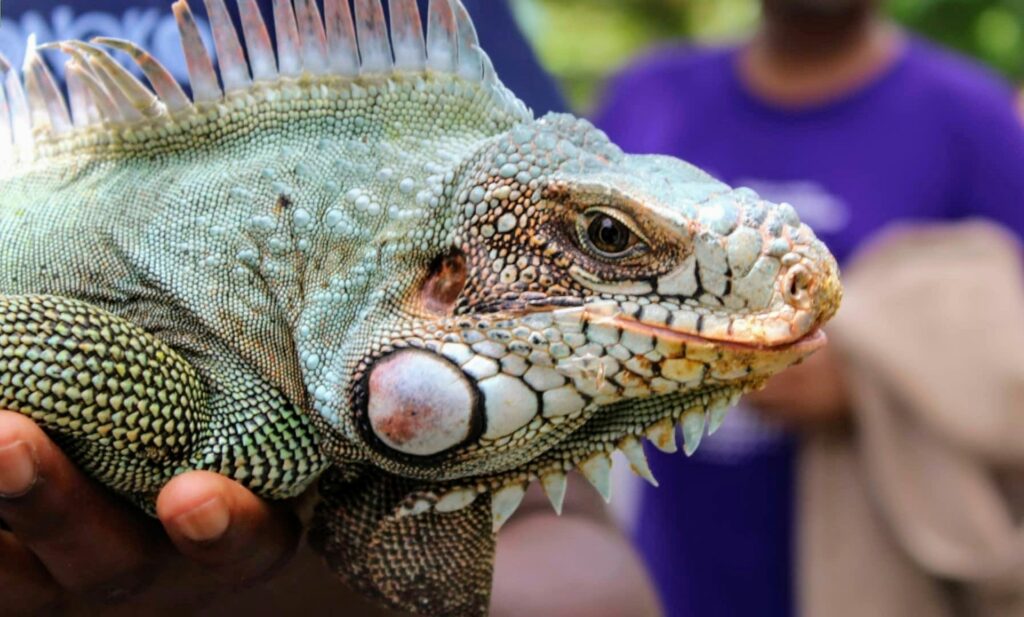
Locating a qualified veterinarian with specific reptile experience is essential for iguana health maintenance. General small animal veterinarians often lack specialized knowledge about iguana physiology, nutrition, and common health issues.
Search for a vet certified in exotic animal medicine or with demonstrable reptile experience by checking with the Association of Reptile and Amphibian Veterinarians or local herpetological societies.
Establish a relationship before emergencies arise by scheduling a wellness exam for your iguana, discussing preventative care protocols, and developing a health monitoring plan.
During your initial visit, evaluate whether the veterinarian asks detailed questions about your husbandry practices, examines the iguana thoroughly, and provides specific (rather than generic) care recommendations.
Maintaining annual checkups allows for early detection of potential health issues, even when your iguana appears healthy.
Ethical Sourcing and Adoption Options
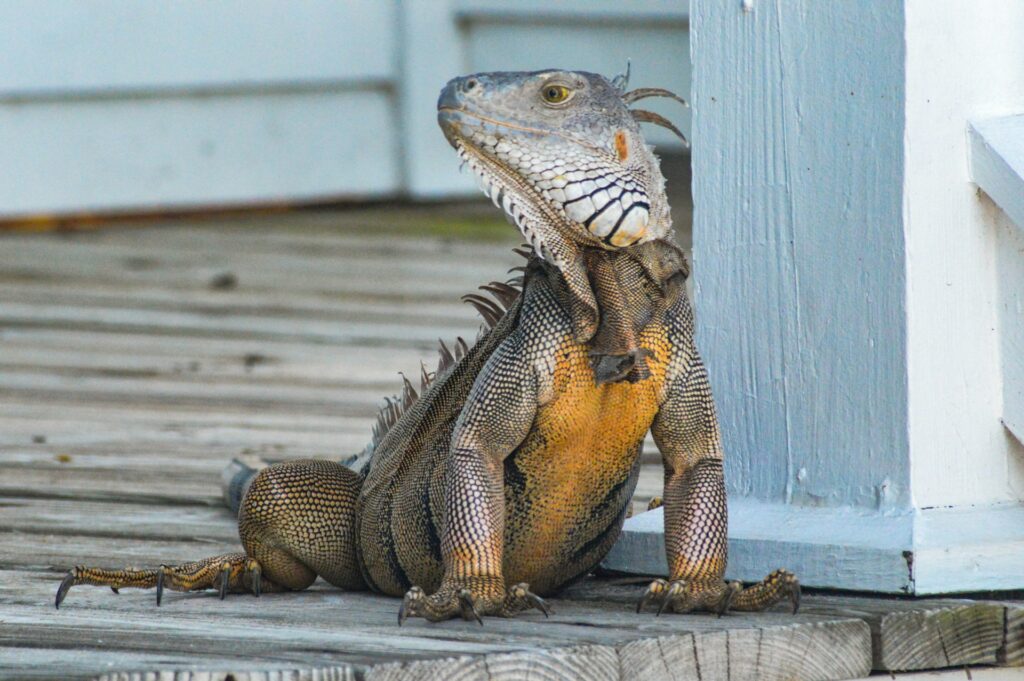
When bringing an iguana into your home, consider ethical sourcing options that don’t contribute to wildlife trafficking or irresponsible breeding.
Many animal shelters and reptile rescue organizations have iguanas available for adoption, as these animals are frequently surrendered when owners underestimate their care requirements.
Captive-bred iguanas from reputable breeders generally adapt better to captivity than wild-caught specimens, which may carry heavy parasite loads or stress-related health issues.
Before acquiring an iguana, request detailed information about its origin, age, and health history, and observe the animal for signs of good health, such as clear eyes, proper weight, and alert behavior.
Support reptile conservation efforts by avoiding purchasing wild-caught specimens and educating others about responsible iguana ownership.
Remember that adopting an adult iguana can be rewarding and may provide a second chance for an animal in need.
Conclusion
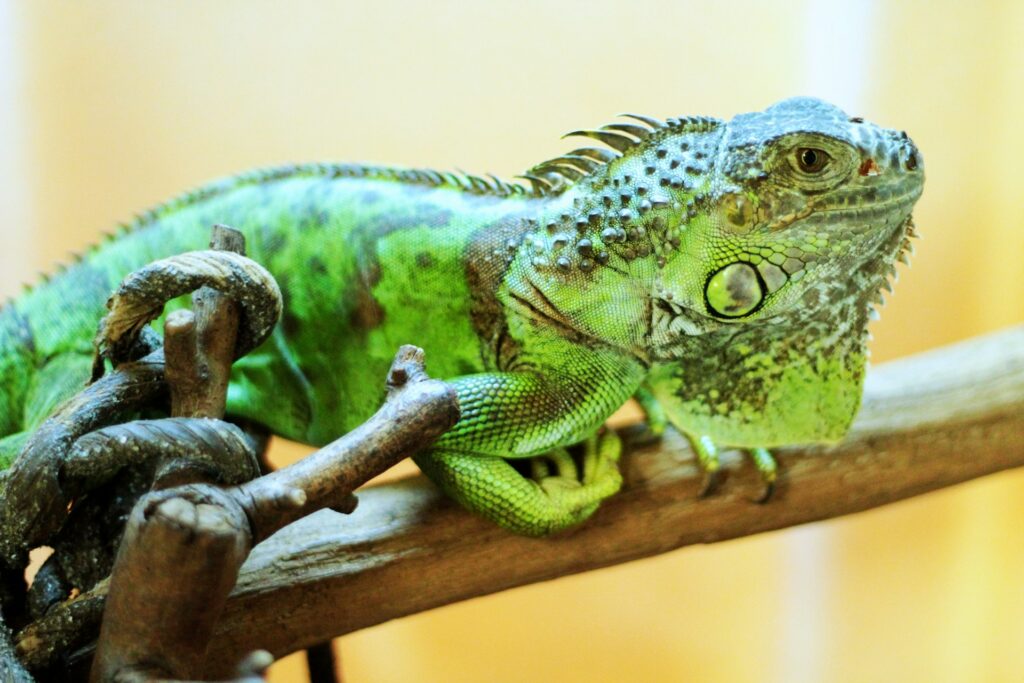
Caring for an iguana properly requires dedication, knowledge, and consistent attention to their specialized needs.
While these magnificent reptiles can make rewarding companions for the right owner, they are not suitable for everyone due to their size, lifespan, and specific care requirements.
By providing appropriate housing, nutrition, veterinary care, and socialization, you can help your iguana thrive in captivity and enjoy the unique relationship that develops between keeper and reptile.
Remember that responsible ownership includes continuous education about best practices in iguana care, as our understanding of reptile husbandry continues to evolve.
If you’re prepared for the commitment, an iguana can become a fascinating companion that brings a touch of prehistoric majesty into your home for many years to come.



